Open Letter to Parents and Pediatricians Regarding COVID Vaccination
Part II: A Review and Update
By Rob Rennebohm, MD and Geert Vanden Bossche, DVM, PhD

FOREWORD:
Since the initial posting of the Open Letter to Parents and Pediatricians Regarding COVID Vaccines (https://notesfromthesocialclinic.org/an-open-letter-to-parents-and-pediatricians-2/), new scientific information has emerged that has added strength, further detail, and further clarity to the concerns and understandings explained in the Open Letter. In particular, Dr. Geert Vanden Bossche has authored two new illuminating articles, entitled The Immunologic Rationale Against C-19 Vaccination of Children and Predictions on the Evolution of the COVID 19 Pandemic. Here are links to those two articles:
To share the above-mentioned additional information with parents and pediatricians, we have co-authored this Open Letter—Part II: A Review and Update.
In Part II we have provided 37 references. In addition, the reader is referred to the 1078 references in the original Open Letter and to the many other references in Dr. Vanden Bossche’s two articles.
The reader is also referred to the following video-interviews, regarding the Open Letter:
Video-interview (Dr. Philip McMillan and Dr. Rennebohm):
https://www.youtube.com/watch?v=uDRVq9NKrJQ&t=981s
Video-conversation between Dr. Vanden Bossche, Dr. McMillan, and Dr. Rennebohm:
https://philipmcmillan.substack.com/p/first-recorded-discussion-between?s=w
Further information about COVID may be found on the following websites:
Dr. Vanden Bossche’s website: www.voiceforscienceandsolidarity.org
Dr. Rennebohm’s website: www.notesfromthesocialclinic.org
Note: the drawings in this article are those of Kathe Kollwitz (1867-1945), a compassionate German artist who was deeply concerned about children, mothers, human suffering, poverty, injustice, and war. If she were with us today, Kathe would undoubtedly be deeply concerned about the COVID situation and other profound issues currently facing Humanity.


PART II—A REVIEW AND UPDATE:
Decisions regarding COVID vaccination of children should be based as much as possible on a deep appreciation of the immunology, virology, vaccinology, evolutionary biology, molecular biology, and molecular epidemiology involved. The discussion below is intended to help parents and their physicians to make an informed, scientifically sound decision about COVID vaccination.
1) Naturally Acquired Immunity: How does the immune system normally deal with SARS-CoV-2?
When a person is exposed to the SARS-CoV-2 virus (hereafter referred to as SC-2), the virus typically enters through the person’s nose or throat and threatens to infect the person’s upper respiratory tract (URT). By “threatens to infect” we mean that the virus tries to enter the mucosal cells in the URT. The virus wants to enter those cells because it needs to replicate within our cells in order to survive. Viruses cannot replicate outside of living cells and, therefore, cannot survive outside of cells.
The SC-2 virus is able to enter cells because it has spike protein on its surface that it inserts into the ACE-2 receptors on mucosal cells (and, potentially, other cells). When this insertion occurs, the ACE-2 “door” of the cell opens and the virus enters the cell. The spike protein is the “key,” and the ACE-2 receptor is the “keyhole.” Specifically, and more accurately, it is the Receptor Binding Domain (RBD) at the tip of the spike protein that is inserted into the “keyhole” to unlock the “door.”
Below are drawings of the spike protein. [1] The spike protein has an S1 region and an S2 region. The RBD is at the tip of the S1 region. When the RBD is in its “open” conformation, it is able to fit into the “keyhole” of the ACE-2 receptor on human cells. When the RBD is in the “closed” conformation, it is unable to fit into the keyhole of the ACE-2 receptor. Later we will talk more about these conformational changes.
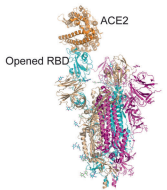

After the virus enters and replicates within the cell, parts of the virus move from the interior of the cell to the outside wall of the cell. This is mentioned because it is the presence of this viral material on the cell surface that is recognized by the immune system and tells the immune system that the cell has been infected.
How does the immune system normally prevent SC-2 infection, or at least prevent it from getting out of control? The following discussion is complicated, but do not feel obligated to master all of the information. What is important is to appreciate the extraordinary complexity, competency, beauty, flexibility, and delicacy of the human immune system and to view it as a precious immune ecosystem that we must respect and protect. As with other ingenious ecosystems in Nature, we must not recklessly interfere with the human immune ecosystem, especially in children.
Below is the table presented and discussed in the original Open Letter to Parents and Pediatricians. It provides a broad overview of the immune system and emphasizes that it is comprised of two major compartments—the mucosal immune system and the systemic immune system, each of which has an innate immunity division and an acquired (adaptive) immunity division.

The first line of defense is the innate immunity division of the mucosal immune system. [2-11] In particular, natural polyspecific IgM antibodies [12-18] attach (bind) to the virus (before the virus has had a chance to enter cells) at multiple sites on the surface of the virus—they do not just bind to the spike protein; they bind to many other sites on the virus, as well. [12-18] The natural antibodies that bind to the spike protein make it difficult for the virus to enter mucosal cells—because, when the spike protein is coated with antibody (particularly anti-RBD antibody), it no longer optimally fits into the ACE-2 keyhole.
By “polyspecific” we mean that these natural antibodies are capable of binding to a variety of different viruses, not just to one specific type of virus. For example, they can bind to (and at least partially protect us from) all of the different common coronaviruses, not just to SC-2. These antibodies are non-specific and polyspecific, not specific for just one virus. All of us were born with these innate natural antibodies. They are continually replenished by the B1 lymphocytes of our innate immune system.
So, one of the first protective things that happens when a virus enters the URT is that our innate natural antibodies bind to the invading SC-2 virus and make it difficult, even impossible, for the virus to enter mucosal cells. In other words, these natural antibodies have the capacity to either fully or partially “neutralize” the spike protein on the surface of the virus (in addition to binding to other sites on the virus). Fully neutralized spike protein is unable to open the door to the cell. When unable to enter cells, the virus withers and dies.
If the natural antibodies are not able to fully prevent entry of virus into cells, and some virus enters some cells, the natural antibodies work with NK cells (natural killer cells) to help the NK cells to kill the mucosal cells that have become infected. These NK cells are also part of our innate immune system. The natural antibodies and the NK cells recognize the viral material on the outside surface of the infected cells. That is how they know which cells need to be killed, and which cells must be left alone. By killing the infected cells, the infection is stopped in its tracks. Yes, some of our mucosal cells (the infected ones) are sacrificed in this process, but that is okay. It is better to sacrifice some cells than to allow the infection to grow and spread. Besides, the infected cells would have been killed by the virus anyway.
The above process, by which natural antibodies and NK cells of our innate immune system work together to at least partially protect us, is a process that can be practiced and further improved through that practice. Our innate immune system, in particular, learns from each disease-fighting experience it has, and it becomes more efficient and effective the next time around. For example, when the innate immune system is exposed to SC-2 in the future, including a new SC-2 variant, it uses its previous experience with SC-2 to improve its response to that future encounter. Also, if a person has had a disease-fighting experience with other coronaviruses in the past, that experience can contribute to protecting that person against SC-2, even when SC-2 is encountered by that individual for the first time.
In other words, experience with a variety of respiratory viruses provides valuable “training” for the innate immune system. This training is an epigenetic process. Young children, in particular, produce abundant quantities of natural antibodies to protect them from the many viruses they encounter for the first time. Because the concentrations of these natural antibodies progressively wane as children grow up, we are wise to “allow” young children to encounter ordinary relatively harmless respiratory viruses during their childhood—so that their innate immunity can be optimally trained.
When viruses break through children’s first line of immune defense, children gain an opportunity to train their innate immune system to work better in the future. That is to say that by contracting mild—or in worse-case scenario—moderate disease, children better arm themselves for future encounters with ordinary/common viruses. Of course, we cannot have our children rely on their innate immune system when it comes to highly infectious dangerous viruses (e.g., measles) as the latter may massively break through their first line of immune defense and, therefore, put them at high risk for severe disease. This is why vaccination against highly infectious and/or potentially highly debilitating diseases are highly recommended, especially if those viruses are antigenically stable (i.e., not highly mutable). However, we do not do our children a favor by trying to prevent them from ever getting a “cold” of any sort. Experience with ordinary colds helps prepare their innate immune system for an eventual encounter with more serious respiratory viruses, like new more virulent variants of SC-2. We must protect and avoid harming our valuable innate immune system, especially in children.
In addition to the above-described mucosal innate immune response to a virus (like SC-2), our mucosal immune system also has an “adaptive” (or “acquired”) immune system that is prepared to deal with the virus, if needed. This is a more sophisticated and specific response to a specific virus, like SC-2. Namely, B cells of the adaptive/acquired immune system make antibodies that are very specific for SC-2 (and specific only for SC-2), and some of these B cells become “memory B cells” that will remember how to produce the same SC-2-specific antibodies in the future, when/if the person is exposed to SC-2 in the future. Also, the adaptive immune system has the capacity to generate and activate virus specific cytolytic T cells—i.e., cytolytic T cells that are specifically capable of killing cells that have become infected with a specific virus. Just as there are memory B cells, there are memory cytolytic T cells. However, to date, there has been no evidence of generalized induction of SC-2-specific memory cytolytic T cells as a result of natural SC-2 infection or COVID vaccination.
If the mucosal immune system (with its innate and adaptive/acquired divisions) is unable to prevent the viral infection from penetrating deep into the lower respiratory tract (LRT) and into the systemic compartment (the internal organs and body as a whole), we have a systemic immune system to help us. The systemic immune system, like the mucosal immune system, has innate and adaptive/acquired divisions.
When a person has been more than minimally threatened by a respiratory virus, like SC-2, the above innate and adaptive immune reactions not only neutralize and kill the virus at the time of that initial threat, but also provide that person with robust, long-duration sterilizing immunity against that specific virus—such that when that person is exposed to that same virus in the future, that person will be able to quickly kill the virus. This is what is meant by naturally acquired immunity. It is a naturally acquired sterilizing immunity to that specific virus.
At this point in our discussion we should mention that if the specific virus (e.g., SC-2 virus) has developed several important mutations between the time of the person’s first encounter with the virus and a subsequent encounter, the virus-specific antibodies that were developed by the adaptive immune system during the first encounter (with SC-2, e.g.) might not work optimally for the new viral variant. However, the good news is that our innate immune system can be at least partially protective in this situation, and our adaptive/acquired immune system can make adjustments for the future. That is one of many reasons why it is so important to have a healthy, experienced, well-trained, unimpeded innate immune system. The better trained the innate immune system is, the better it is able to protect us.
Regarding mutations, it is helpful to know that some viruses are much more mutable than others. Some viruses, like measles, are not highly mutable. The SC-2 virus is much more mutable than the measles virus.
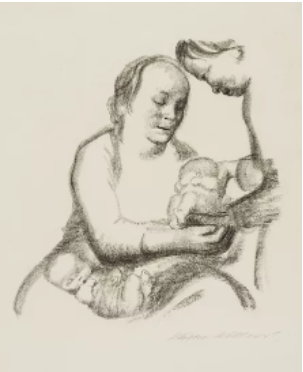
2) How does the mass COVID vaccination campaign drive the appearance of a succession of predominant SC-2 variants that are increasingly able to “escape” the neutralizing effect of the vaccines?
In the initial Open Letter to Parents and Pediatricians we discussed how the mass COVID vaccination campaign has been driving the successive appearance of one predominant new SC-2 variant after another, with each new variant becoming more infectious than preceding variants. To briefly review that explanation: The spike protein of the virus is the part of the virus that enables it to enter (infect) human cells. The vaccinal antibodies threaten the virus by attaching to the spike protein in a way that makes the spike protein “key” (the RBD, specifically) a poor fit for the ACE-2 receptor site (“keyhole”). [19-35]
At this point we need to distinguish between “fully neutralizing antibodies,” “partially neutralizing antibodies,” and “non-neutralizing” antibodies and between “optimal/sterilizing” immunity and “sub-optimal/non-sterilizing” immunity. A fully neutralizing antibody against the SC-2 virus—i.e., antibody against the RBD of the spike protein e.g.—attaches to the RBD of the spike protein in such a way that the spike protein is no longer able to fit into the keyhole to unlock the door to the cell and, therefore, the virus is unable to enter (infect) the cell. That is, a fully neutralizing antibody contributes to optimal, sterilizing immunity. If an antibody only partially neutralizes the spike protein, it might slow down infection of cells but does not prevent at least some viral infection and transmission. A non-neutralizing antibody against the spike protein will not slow down viral entry into the cell, and, as we will discuss later, might, under certain circumstances, actually facilitate viral entry into the cell. So, vaccines that produce antibodies that are, or become, only partially neutralizing, will be sub-optimal non-sterilizing vaccines, not optimal/sterilizing vaccines.
At this point, let us clarify that the COVID mRNA vaccines were designed to primarily elicit production of neutralizing antibodies against the spike protein, particularly against the RBD of the spike protein. It should be realized, though, that the COVID vaccines elicit production of antibody not just against the RBD of the spike protein, but also antibody against other sites on the S1 component of the spike protein as well as antibody against sites on the S2 component of the spike protein. (See earlier images, in section 1.) These vaccinal antibodies differ regarding the extent to which they neutralize the spike protein—the antibodies against the RBD being by far the most neutralizing. Some of the antibodies produced by COVID vaccination are non-neutralizing. So, the COVID vaccines result in the production of both neutralizing and non-neutralizing antibodies.
The COVID vaccines were designed to try to fully neutralize the spike protein of the initial Wuhan strain of SC-2. Unfortunately, since the beginning of the vaccination campaign, the vaccine has been administered in the midst of an active pandemic—which is a very problematic thing to do. After vaccination, it takes at least 1-2 weeks before a sufficient quantity of mature neutralizing anti-spike antibody is produced. In the meantime, immature spike-specific vaccinal antibodies are produced, but they are capable of only partially neutralizing the virus, as opposed to fully neutralizing the virus. Because the vaccine has been administered in the midst of an active pandemic, vaccinated people have been likely to encounter the SC-2 virus before they have been able to mount an adequate mature vaccinal antibody response. This has meant that spike protein, though somewhat impaired by the immature partially neutralizing vaccinal antibodies, has still been able to fit into the ACE-2 keyhole, thus enabling some virus to enter the cells. This has resulted, at the population level, in viral replication occurring in the midst of only partially neutralizing (sub-optimal/non-sterilizing) vaccinal antibodies. This has put great immune pressure on the virus-host ecosystem to select “immune escape” variants that have the ability to “evade (escape)” the partially neutralizing effect of the immature anti-spike vaccinal antibodies. In this setting, viral mutations (as explained in the next two paragraphs) that have enabled new, more infectious immune escape-variants have been selected and allowed to expand in prevalence (thanks to the mass vaccination campaign) to become dominant.
When a virus enters a cell, it replicates exuberantly within that cell. Copying mistakes during this replication result in mutations—e.g., mutations in the spike protein of the SC-2 virus. Certain random mutations of the spike protein result in that mutated spike protein being a better fit (for the keyhole), even with some vaccinal antibody partially draped over parts of the spike protein, and this gives those mutated viruses (those variants with the better fitting mutated spike protein) a selective advantage for survival.
In other words, new variants with these successful spike mutations will gain a competitive fitness advantage over the older variants, which will lose in the competition and die out. In this way, a rapid mass vaccination campaign, in the midst of an active pandemic of a highly mutable virus drives the dominant propagation of new, increasingly vaccine-resistant variants. If a new variant then comes along that is even better able to “escape” the vaccinal antibodies and unlock the ACE-2 door, that variant will be selected and propagate more and more abundantly on a background of population-level immune pressure on the viral life cycle and will become dominant until it is out-competed by a yet more fit new immune-escape variant, and so on…. This is the basic concept of “natural selection” that Darwin taught us more than 160 years ago.
In the above way, the mass vaccination campaign, waged in the midst of an active pandemic, has predictably resulted in a succession of new dominant variants—with each new dominant variant being more vaccine-resistant, more infectious, and better “fit” than its predecessor. The Omicron variant is the latest in this succession. Since the Omicron variant is largely vaccine-resistant, it has become even more infectious in vaccinees than any of its predecessors. (See next section.)

3) How do non-neutralizing vaccinal antibodies actually facilitate entry of virus into the cell?
Initially, the vaccinal antibodies against the spike protein of the Wuhan strain were considerably neutralizing against that Wuhan strain and, thereby, were able to at least partially impair entry of virus into cells. However, as each new SC-2 variant has emerged (due to immune pressure and natural selection of more “fit” “escape” variants), those original anti-RBD vaccinal antibodies have become less and less neutralizing (against the newer spike proteins) and are now largely failing to neutralize the Omicron variant. That is, the vaccinal anti-RBD antibodies that worked somewhat well against the spike protein of the Wuhan strain now fail to neutralize the spike protein of more recent variants. The new variants have mutations on their spike protein that have enabled them (the new variants) to largely “escape” vaccinal anti-RBD antibodies. [19-25]
At this point we need to understand that, whereas neutralizing vaccinal antibodies prevent virus from entering cells, non-neutralizing vaccinal antibodies can, under certain circumstances, actually facilitate entry of virus into cells. How can that be and when does this happen? [32-35] This happens when an SC-2 variant (like Omicron) becomes largely resistant to the neutralizing vaccinal antibodies. As the neutralization capacity of the anti-RBD vaccinal antibodies diminishes, the affinity of the non-neutralizing vaccinal antibodies for the N-terminal domain (NTD) of the spike protein increases. This, then, results in a conformational change in the shape of the spike protein that makes this conformationally changed spike protein a better fit for the ACE-2 receptor. In this way, non-neutralizing vaccinal antibodies can facilitate viral entry into the cells of vaccinated people. This is a major reason why vaccinated people (with their high quantities of non-neutralizing vaccinal antibodies, which are made even higher after receiving “booster” shots) have become so easily infected—more easily infected than unvaccinated people (who do not have these facilitating non-neutralizing vaccinal antibodies). Compared to unvaccinated people, vaccinated people are now being more easily infected (due to these facilitating non-neutralizing vaccinal antibodies, as well as the vaccine-resistance of the new variants).

4) The next evolutionary step is for the variants to become more virulent.
So far, new dominant SC-2 variants have not become more virulent (deadly), despite becoming more infectious. For example, the Omicron variant has been easily infecting vaccinated people (due to the Omicron variant being resistant to neutralizing vaccinal antibodies and because, in addition, the non-neutralizing vaccinal antibodies are facilitating viral entry into cells) but has been causing only mild COVID illness. Why? This is because the same non-neutralizing vaccinal antibodies that facilitate viral entry into cells are actually impairing spread of viral infection deep into the lower respiratory tract (LRT) and into the systemic compartment of the human body. [36, 37]. That is, the non-neutralizing vaccinal antibodies are impairing development of more extensive and severe disease. In short, this is because conformational changes in the virus, caused by the non-neutralizing vaccinal antibodies, impair the processes of trans-infection and trans-fusion (infection of uninfected cells by neighboring infected cells). Trans-infection and trans-fusion eventuate in very harmful syncytia formation deep in the LRT and systemic compartment of the body. This impairment (by non-neutralizing antibodies) of deep viral infection and syncytia formation in the LRT and systemic compartment results in less severe disease. That is why the Omicron variant causes only mild disease, despite being very infectious.
But this is about to change! The immune pressures created by the mass vaccination campaign will eventually (possibly within a few months) result in the natural selection and predominance of variants that have the capacity to “escape” this vaccinal non-neutralizing antibody-mediated impairment of deep infection and syncytia formation. Once this occurs, the new variants will be more virulent (more deadly) than any of their predecessors. Omicron constitutes a critical step in the shift of immune pressure in that resistance of Omicron to potentially neutralizing antibodies allows vaccinees to convert population-level immune pressure on viral infectiousness (exerted by vaccinal neutralizing antibodies) to population-level immune pressure on viral trans infectiousness (exerted by non-neutralizing vaccinal antibodies), which results in more severe disease. In other words, the COVID vaccination campaign is inevitably going to generate an SC-2 variant that is both highly infectious and highly virulent and will dominate.

5) The COVID vaccines actually undermine the natural immune system and prevent its training.
Another extremely important adverse effect of the COVID vaccines is that they undermine and suppress the functionality and training of the innate immune system, especially in children. Whereas the vaccinal antibodies bind tightly to the spike protein, innate natural antibodies bind only loosely. This results in the vaccinal antibodies crowding out and outcompeting the natural antibodies for binding sites on the spike protein. It is as if the vaccinal response (the immune response stimulated by the vaccine) says to the innate immune system, “I’ve got this; you need not get involved; leave this to me.” This vaccinal response bypasses and sidelines the natural antibodies and, thereby, interferes with the use and training of innate immunity. The COVID vaccines, thereby, weaken innate immunity.

6) Furthermore, the quality of COVID vaccine-acquired immunity is inferior to the quality of naturally acquired immunity against SC-2.
Naturally acquired immunity (immunity acquired as a result of natural infection) is multi-dimensional, multi-faceted, and results in robust, long-standing, sterilizing immunity— particularly (but not exclusively) when it involves both the innate and adaptive components of the immune system. In contrast, COVID vaccinal immunity is non-sterilizing and relatively uni-dimensional. Unfortunately, a major limitation of the COVID vaccines—and a major difference between how the natural immune system approaches the virus and how the vaccine approaches the virus—is that the COVID vaccines result in vaccinal antibodies that attach only to polypeptidic sites on the spike protein, not to any of the virus surface-expressed self-glycan motifs/patterns that are typically recognized by polyspecific innate natural antibodies. Because natural/innate antibodies produced by the innate immune system engage through multivalent interaction with repetitive patterns of self-mimicking glycans that are expressed on the surface of enveloped glycosylated viruses, these antibodies have high avidity for several respiratory viruses (including all SC-2 variants) while binding with much lower affinity to spike protein than do spike-specific antibodies.
Compared to naturally acquired immunity, COVID vaccinal immunity is uni-dimensional, single-minded immunity that focuses on production of antibodies that bind with high affinity to specific antigenic sites (“epitopes”) of the spike protein (e.g., the RBD of the spike protein). Vaccinal immunity creates memory B cells (for future production of anti-spike antibodies) but there is no evidence that the COVID vaccines create spike-specific memory cytolytic T cells. Also, the vaccinal training focuses on the adaptive part of the systemic immune system, not the innate immunity division within the systemic compartment. Furthermore, the COVID vaccines almost exclusively train the systemic compartment, and only partially so, and have little effect on the mucosal compartment, which is the most important site of immune protection against a respiratory virus. In fact, as mentioned earlier, the vaccinal antibodies undermine a person’s innate immunity—both in the systemic and mucosal compartments. For these reasons, vaccinal immunity is far inferior to naturally acquired immunity.
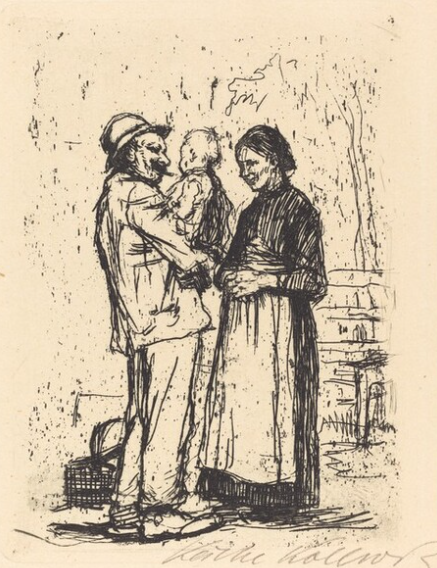
7) Furthermore, the sub-optimal training the systemic compartment receives from vaccination becomes habitual for the vaccinated individual, because of the “priming” and memory it creates within the adaptive immunity division of the systemic immune system.
The COVID vaccines train (“prime”) the person’s immune system to reflexively respond to SC-2 by producing (within the systemic compartment) anti-spike antibodies (and only anti-spike antibodies) whenever the person is exposed to SC-2 or is “boosted.” Worse, the antibodies produced become outdated, because of the new variants that appear. These vaccinal antibodies then outcompete the innate natural antibodies, undermine our innate immunity, and perpetuate and escalate the misguided and outdated immune reaction to the virus. Instead of our innate immune system becoming increasingly trained and experienced, it becomes sidelined, and our immune system reacts with the same old, outdated, single-minded, anti-spike antibody response that is non-sterilizing and enhances viral infectiousness as it loses its viral neutralizing capacity. This is an inflexible, continually repeated, ineffective, deleterious immune response, and it is repeatedly invoked every time the vaccinated person is exposed to the virus or receives a booster. And whenever it gets triggered, it contributes to the escalation of the entire problem. It should also be realized that this vaccinal “imprinting” or “priming” is not just a temporary phenomenon. It is like installing a type of software in one’s immune computer that cannot be erased.

8) The COVID vaccines do not contribute to herd immunity:
Only sterilizing immunity contributes to herd immunity. When a person becomes naturally infected with SC-2, and the infection is more than minimal, that person develops naturally acquired sterilizing immunity (particularly when the adaptive immune system participates in the immune response) and, thereby, contributes to herd immunity.
COVID vaccination does not contribute to herd immunity. The COVID vaccines do not prevent infection or transmission and, therefore, do not/cannot result in sterilizing immunity. In fact, the COVID vaccines may inhibit a vaccinated individual from developing sterilizing immunity, even when that individual subsequently develops actual infection. Even if a person happened to have developed naturally acquired sterilizing immunity from past infection before becoming vaccinated, the vaccine might interfere with that sterilizing immunity.
Mass vaccination of everyone (i.e., across all age groups), with a sub-optimal, non-sterilizing vaccine, during an active pandemic, is particularly good at preventing development of herd immunity. If all are vaccinated, such that none has sterilizing immunity, there is no one left who is capable of contributing to herd immunity. Pandemics do not subside until sufficient herd immunity has developed.
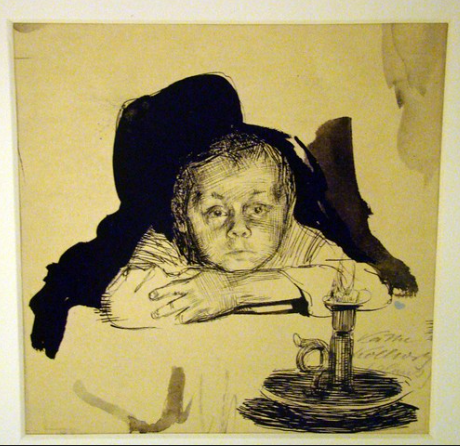
9) Would this development of increasingly vaccine-resistant, increasingly infectious new predominant variants have happened if the COVID vaccine had been used in a truly prophylactic way, well in advance of a pandemic?
The above phenomenon—of a rapid mass vaccination campaign with a sub-optimal vaccine in the midst of an active pandemic, driving the natural selection and dominant expansion of a succession of predominant variants that are increasingly infectious (compared to their predecessors)—would still occur, but at a slower pace, if the same vaccine were used well in advance of an epidemic caused by a viral strain whose antigenic constellation is optimally matched by the vaccine. The key to understanding this is to realize the difference between using a vaccine (even one that produces considerably neutralizing anti-spike antibody) in the midst of an active pandemic versus using the same vaccine well in advance of the pandemic.
[Note: Before proceeding further with this explanation, it is important to again emphasize that, normally, when the immune system produces specific antibodies in response to a specific viral threat, the immune system first produces immature antibodies (which are only partially neutralizing and, therefore, sub-optimal), before it is able to produce an adequate quantity of mature antibodies (that are more neutralizing). It takes at least 1-2 weeks, often longer, before an adequate quantity of mature antibodies are produced.]
If vaccination is occurring in the midst of a pandemic, people are being vaccinated while the virus is circulating widely in the community at a high level, such that a substantial amount of vaccinated people are likely to be exposed to the virus shortly after vaccination, before their immune system has been able to mount a mature response. This enables the virus to replicate in the presence of immature sub-optimal only partially neutralizing vaccinal antibodies, which places the virus under intense immune pressure and forces the natural selection of mutated spike protein that is able to escape the immature vaccinal antibody and more easily infect cells. If, on the other hand, this same vaccine is administered many months before a pandemic arrives (i.e. when there is no virus around), each vaccinated person has sufficient time to generate high quantities of mature neutralizing virus-specific antibodies. Then, when the virus arrives, those antibodies are already present and able to impede infection and transmission. Prophylactic vaccination against coronavirus would only be effective in the case of an endemic situation (i.e., to prevent an outbreak). As endemicity implies asymptomatic infection, only small parts of the population will be exposed to the virus shortly after prophylactic vaccination, which will create minimal immune pressure.
A key difference here is “sufficient time to generate” the mature antibodies. When the vaccine is given in the midst of an active pandemic (i.e., when there is lots of virus circulating in and around people), many people who receive the vaccine become infected before the vaccine has had “sufficient time to generate” the mature vaccinal antibodies. That is, these people are becoming infected while they are in the process of slowly developing their mature antibodies—i.e., they are becoming infected while they are producing immature antibodies, which are only partially neutralizing and are, therefore, sub-optimal. It is this combination of viral replication occurring in the midst of sub-optimal vaccinal antibody development in large parts of the population (mass vaccination!) that results in severe immune pressure and natural selection of more infectious “escape” variants. When a vaccine is administered well in advance of a coronavirus epidemic, this combination only occurs at low frequency because the mature prophylactic vaccinal antibodies are mostly produced in the absence of circulating virus—i.e., in the absence of viral replication—and this results in less population level immune pressure on the virus.
Another key concept is the difference between mass vaccination across all age groups (i.e., vaccinating everyone) and selective vaccination of only the most vulnerable (the elderly and those with worrisome co-morbidities). Mass vaccination across all age groups places enormous immune pressure on the virus (as does complete lockdown, by the way). Selective vaccination puts much less immune pressure on the virus.
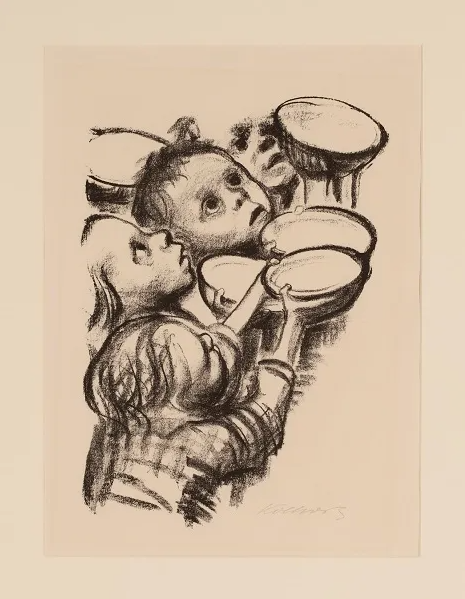
10) Will it help to develop new, updated mRNA vaccines that match new mutated SC-2 variants—e.g., an Omicron-specific mRNA vaccine?
The pharmaceutical companies that have produced the current COVID mRNA vaccines are promoting the notion that new, updated mRNA vaccines can be easily and quickly produced to replace mRNA vaccines that have become outdated. For example, a new Omicron-specific mRNA vaccine can be produced, and, after that, new variant-specific mRNA vaccines can be produced for future new variants. One problem with this strategy is that it will be impossible to keep up with the new variants. Each new variant-specific mRNA vaccine will drive the natural selection of new variants with new escape mutations that will quickly render the most recent mRNA vaccine obsolete. This will be a never-ending battle that the virus will win.
But a more important problem with this strategy is that re-vaccination of vaccinees with an updated spike (Omicron)-based vaccine during an active pandemic will further increase likelihood of breakthrough infections and will further increase population-level immune pressure on viral virulence. This is primarily because such vaccination increases quantities of vaccinal non-neutralizing antibodies—that, as explained earlier (in sections 3 and 4), enhance viral infectiousness (facilitate viral entry into cells) and increase population-level immune pressure that results in the natural selection of more virulent variants.
This strategy will only perpetuate and worsen the problems created by the mass COVID vaccination campaign. This strategy, therefore, must be strongly resisted.
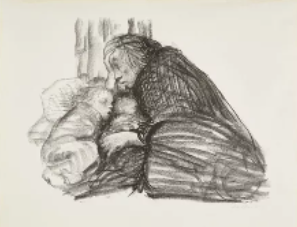
11) Do the concerns expressed in this article about the “COVID vaccines” apply only to the mRNA vaccines (Pfizer and Moderna) or to all of the currently available COVID vaccines?
As of May 11, 2022, ten COVID vaccines have been granted Emergency Use Listing (EUL) by the World Health Organization (WHO). These vaccines can be categorized into four groups, according to the “platform” used:
- Messenger RNA: Moderna, Pfizer/BioNTech
- Viral Vector: Johnson & Johnson, Oxford/AstraZeneca, Covishield
- Protein Subunit: Novavax, Covovax
- Inactivated Whole Virus: Covaxin, Sinovac, Sinopharm
In addition, the Sputnik (viral vector) vaccine is used in Russia and other countries.
Although these COVID vaccines may differ regarding the side effects they may cause in individual people who receive the vaccine, all of these vaccines create the same problem at a population level. That is, mass vaccination in the midst of the COVID pandemic with any of these vaccines will result in the vaccinated population placing the virus under great immune pressure, and this will result in a succession of variants that have become dominant, through natural selection, because they have “escape” mutations that inevitably make them first more infectious, then resistant to potentially neutralizing vaccinal antibodies and eventually also more virulent (deadly).
So, yes, at the population level—at the evolutionary biology level—the concerns expressed in this article are applicable to all currently available COVID vaccines.
12) Summary:
- Because the mass COVID vaccination campaign has been rapidly implemented in the midst of an active pandemic, instead of well in advance of the pandemic—i.e., because viral exposure has often occurred while vaccinal antibodies have been immature and only partially neutralizing and have, thereby, not prevented infection—the vaccination campaign has continually placed great population-level immune pressure on a highly mutable replicating virus (SC-2). This has resulted in a succession of variants that have become dominant, through natural selection, because they have “escape” mutations that make them more “fit.” These dominant variants have become increasingly vaccine resistant and have resulted in the mature vaccinal antibodies becoming increasingly less neutralizing.
- As new SC-2 variants become increasingly vaccine-resistant, and the neutralizing vaccinal antibodies become increasingly less-neutralizing, non-neutralizing vaccinal antibodies actually facilitate entry of virus into the cells of the vaccinated.
- Although the non-neutralizing vaccinal antibodies are now facilitating viral entry into cells (of the vaccinated), they have (temporarily) been impairing penetration of the viral infection deep in the body—thereby impairing syncytia formation and reducing disease severity. But this temporary beneficial effect of the non-neutralizing vaccinal antibodies is about to change (vanish), because the next inevitable evolutionary step is that the mass vaccination campaign will drive the development of variants that are able to “escape” the immune pressure being exerted by these non-neutralizing vaccinal antibodies that are impairing penetration of the viral infection (and impairing syncytia formation deep in the body)—i.e. these new variants will have increased virulence. These new more virulent variants are likely to appear soon, especially if the mass vaccination program is expanded by booster campaigns and vaccination of younger age groups (children).
- In short, the mass vaccination campaign results in the natural selection of variants that are increasingly infectious and eventually increasingly virulent in vaccinees, as a result of enhanced immune pressure exerted by their non-neutralizing vaccinal antibodies. The mass vaccination campaign has prolonged the pandemic and made it more dangerous, especially for the vaccinated.
- Furthermore, the COVID vaccines undermine the functionality and training of our innate immune system and, instead, prime our adaptive/acquired immune system to habitually respond with the same old, outdated, single-minded, anti-spike antibody response that—instead of conferring sterilizing immunity—actually enhances viral infectiousness as a result of viral resistance to potentially neutralizing vaccine-induced anti-spike antibodies.
- Expanded mass immunization (i.e., vaccination of an increased percentage of the population, ongoing administration of booster, and vaccinee’s exposure to Omicron) will soon drive the emergence of variants that will be highly virulent in vaccinees. This will be a direct consequence of an ever-increasing prevalence of elevated vaccinal non-neutralizing antibodies and, therefore, a self-amplifying deleterious immune response that consists of antibody dependent enhancement of viral infectiousness (leading to breakthrough infection!) and concomitant immune pressure on viral trans infectiousness (leading to increased virulence). None of this applies to non-vaccinated children. In the event that the virus breaks through their innate line of immune defense, their recovery from symptomatic SC-2 disease will result in improved innate immunity that—thanks to the epigenetic mechanism of innate immune adaptation (training)—will confer more effective sterilizing immunity upon future exposure. That is why and how children constitute an important pillar for generating herd immunity. This is in sharp contrast to COVID vaccination, which prevents highly vaccinated populations from developing sterilizing immunity and, in fact, promotes the opposite of herd immunity in that it leads to a higher level of viral infectivity in the population (and, therefore, a higher level of circulating virus and vulnerable people in the community). Adequate herd immunity is what brings a pandemic to end.
- It is abundantly clear that naturally acquired immunity to SC-2 is far superior to vaccine-acquired immunity to SC-2, both at an individual level and at a population level.

13) So, there are many reasons, based on science alone, why children should not receive COVID vaccines?
- The COVID vaccines undermine, suppress, weaken, and give less practice to a child’s natural innate immune system, making the child not only less able to handle SC-2, but also less able to handle other viruses. A healthy innate immune system also protects against development of autoimmunity and malignancy. We must avoid undermining and suppressing the innate immune system, especially in children. We do not want to interfere with the functionality and training of a child’s developing innate immune system. We need to protect a child’s innate immune system, not undermine and sideline it.
- The innate immune system (with its polyspecific natural antibodies and NK cells, etc. ) is more flexible than the uni-dimensional vaccinal anti-spike approach. Natural antibodies can successfully cross-react with future new variants. Following a disease-fighting experience, this first line of immune defense can be trained to better adapt to fighting new viral variants.
- The COVID vaccines have driven the development and predominance of increasingly infectious variants. Furthermore, the COVID vaccine’s non-neutralizing antibodies are now actually facilitating entry of the virus into their cells. Vaccinated people are now being more easily infected than are the unvaccinated.
- The vaccines are now poised to drive the development of more virulent variants. This will lead to more severe, more life-threatening illness, particularly in the vaccinated.
- The mass vaccination campaign is prolonging the pandemic, making it more dangerous, and preventing development of adequate herd immunity.
- The vaccines train the immune system to reflexively respond in the same old, outdated, inadequate, single-minded, non-flexible, non-sterilizing way every time the vaccinated person is exposed to the virus or gets boosted by vaccine. This “software” is not erasable. This perpetuates and escalates the overall problem.
- The vaccines do not result in sterilizing immunity; naturally acquired immunity does.
- The vaccinated do not contribute to herd immunity; naturally acquired immunity does.
- The unvaccinated and healthy child will be better able to handle more infectious and more virulent future SC-2 variants, than will the vaccinated, because:
- They will not have the competing vaccinal anti-spike antibodies that sideline and weaken a person’s innate immunity.
- They will not have the facilitating non-neutralizing vaccinal antibodies that actually increase entry of the virulent variant into their cells and contribute to exerting immune pressure on viral virulence.
- Their innate immunity has not been undermined by past vaccination and, therefore, will be free and able to optimally help them; whereas the vaccinated child’s innate immunity has been undermined, sidelined, and weakened.
- Their immune system will be able to respond to SC-2 in a normal, natural, multi-dimensional, multi-faceted, flexible way—as opposed to the same old, less flexible, more uni-dimensional, less effective way the vaccines “prime” the immune system to reflexively respond over and over again.
- Their innate immune system will be able to reprogram the functional activity of innate antibody-producing B cells such as to more effectively fight new variants.
- Even unvaccinated immunocompromised children and otherwise particularly vulnerable children will be better able to handle the SC-2 virus (and other viruses), because of the above reasons.
- The unvaccinated child will be contributing to herd immunity, whereas the vaccinated child will be dis-contributing to development of herd immunity.
- A vaccinated child will be worse off than an unvaccinated child because:
- The vaccinated child’s developing innate immune system will be sidelined, robbed of needed practice (training), and unavailable (or at least less able) to fight against not only SC-2, but other viruses.
- The vaccinated child will have facilitating non-neutralizing vaccinal antibodies that actually increase entry of virulent virus into their cells and contribute to exerting immune pressure on viral virulence.
- The vaccinated child’s vaccinal antibodies will be unable, anyway, to protect the child from new SC-2 variants that have evolved to become vaccine-resistant and more infectious; and will, ultimately, be unable to protect the child from viral variants that, in addition, have evolved a higher level of viral virulence in vaccinated individuals.
- The vaccinated child’s immune system will be programmed to repeatedly respond in an inflexible, ineffective, uni-dimensional way, instead of responding in the normal, natural, multi-dimensional, multi-faceted, flexible way.
- Because the vaccinal antibodies suppress and weaken the child’s innate immunity, the vaccinated child will be less able to avoid autoimmunity.
- On the basis of the above, alone, the vaccines should not be given to children.
- On top of all this, the vaccines are not nearly as “safe” as advertised. For example, they lead to many autoimmune side effects (myocarditis, e.g.), and the mRNA sticks around for a much longer time than was initially realized. Please see the original Open Letter for a detailed discussion of the side effect risks for individual vaccinees. On this side effect basis (at the individual level), alone, these vaccines should not be given to children.
- In short, there is no scientifically sound justification for COVID vaccination of children. In fact there is scientific evidence that COVID vaccination of children will harm those children and be harmful to Humanity as a whole. The serious short-term and long-term risks of the mass vaccination program far outweigh any fleeting (and soon permanently gone) short-term benefits.
- On a scientific basis alone, the COVID vaccines should not be given to children—because they undermine the immune system, they render the vaccinated person more vulnerable to infection, and they will soon cause a more virulent strain that will cause much more severe disease, particularly in the vaccinated.
- It is our social responsibility to call for an immediate cessation of COVID vaccination of children. In addition to shutting down the COVID vaccination campaign for children, the entire COVID vaccination campaign needs to be carefully and objectively re-evaluated, both from an evolutionary biology standpoint (at the population level) and from a side effect standpoint (at the individual level).
- We must protect our children and grandchildren from a misguided COVID vaccination campaign that is scientifically simplistic, scientifically naïve, and clearly capable of causing great harm.
- As physicians, we must “do no harm.” We must protect children from harm, not expose them to harm. We must protect their precious immune ecosystems, not recklessly interfere with the wisdom of their natural immune responses.
14) If the vaccination campaign is halted (at least for children and potentially for adults), what is left for us to do to protect children and adults from severe COVID—particularly if a new variant appears that is extremely infectious and very virulent?
There is much that we can and must do:
- Thorough, scientifically sound and understandable patient education about COVID can be provided to parents, children, and the public as a whole—particularly regarding COVID vaccination.
- As a pediatrician, a pediatric rheumatologist, and a Susac syndrome specialist, I have been greatly impressed by the capacity of parents, other adults, and even children (particularly adolescents) to comprehend complex medical information—especially when that information is explained in an understandable way. (My 11-year-old grandson quickly and easily comprehended why NBA basketball players and NFL football players, when they “test positive for COVID,” should ask for the CT value at which their COVID PCR test was positive, before accepting mandatory quarantine from play.) Adults and children deserve thorough, accurate patient education, and they benefit enormously from it. Such education reduces mystery, anxiety, fear, confusion, and anger. It is liberating. It can be therapeutic.
- Regarding COVID testing, we should shift to reliance on genomic sequencing for accurate diagnosis of SC-2 and use the CT values of PCR testing for estimation of viral load. It is not too late to start collecting and reporting data properly, and we must do so.
- Good exercise, good nutrition (including immune-supporting nutraceuticals), fresh air, sunshine, and good emotional health (including reduction of COVID-related fear, mystery, confusion, cognitive dissonance, and anxiety) will help optimize people’s immune systems, particularly their innate immune systems.
- For those who become infected, early (and accurate) outpatient diagnosis (with disclosure of PCR CT values and verification by genomic sequencing) and early outpatient treatment with safe anti-viral therapies will help prevent escalation of disease.
- For those who develop a hyperimmune/hyperinflammatory reaction (during the second and third weeks of illness, e.g.) prompt and appropriately aggressive immunosuppression will be critically important.
- In highly vaccinated communities/countries/populations it may be necessary to treat virtually everyone with safe anti-viral therapy, perhaps for 6-8 weeks, in an effort to thoroughly reduce the viral infectious pressure in these populations/communities and to interrupt the vicious cycle of high infectious pressure causing enhanced immune pressure on the viral life cycle and, hence, driving immune escape.
- We must promote respectful, healthy, scientific dialogue—particularly among health care professionals, but also among citizens—dialogue and education that will elevate understanding of the COVID situation, create consensus, bring people together, and unite people in positive, constructive efforts to do what is needed to preserve lives and end this pandemic.
Children are dependent on their parents to make a wise and informed decision about COVID vaccination. Parents depend on their physicians to provide accurate, sufficient, honest information and wise advice, regarding COVID vaccination. Some parents might want to read the original Open Letter and this Part II of the Open Letter, show it to their physicians, and ask their physicians what parts of these writings the physicians disagree with and on what scientific basis.
Physicians have an obligation to be fully familiar with the concerns raised in these documents (and in Dr. Geert Vanden Bossche’s writings and interviews) and to be willing to engage in respectful, honest, healthy, constructive, deep scientific dialogue with colleagues and parents about these concerns. For the sake of children, pediatricians are encouraged to take the lead in organizing and advocating such dialogue. Children and parents would benefit enormously from pediatricians seizing that opportunity and uniting as a group to ensure that truly informed consent is being provided to parents.
For example, it would be enormously helpful if the American Academy of Pediatrics (AAP) were to publish, widely disseminate, and publicly promote the following statement (or a version of it that the AAP feels comfortable endorsing):
“After careful scientific review of the immunology, virology, vaccinology, evolutionary biology, molecular biology, and molecular epidemiology of the COVID situation, the AAP has concluded that, on a scientific basis alone, COVID vaccination of children should be strongly discouraged, until/unless new scientific evidence suggests otherwise. At this point, the campaign to encourage COVID vaccination of children appears to have been unwise—both at an individual level and a population level. We call for an immediate discontinuation of COVID vaccination of children. We recommend that the entire COVID vaccination campaign be carefully, thoroughly, objectively, honestly, and altruistically re-evaluated.”
If the AAP is unwilling to embrace the above statement (or their own similar version), then, in a spirit of promoting much needed respectful, healthy, scientific dialogue, the AAP is encouraged to explain exactly how its analysis of the immunology, virology, vaccinology, evolutionary biology, molecular biology, and molecular epidemiology of the COVID situation has led them to a different scientific conclusion. At the very least, the AAP is encouraged to call for a National Pediatric Summit on COVID Vaccination at which scientists and physicians representing a full, inclusive spectrum of scientific views convene to engage in respectful dialogue about the scientific issues involved in COVID vaccination of children.
Parents and practicing pediatricians are encouraged to send this Open Letter—Part II and the initial Open Letter to the AAP and encourage the AAP to either endorse the above conclusions or provide a detailed scientific explanation for their unwillingness to do so and call for a National Pediatric Summit to discuss issues of COVID vaccination in children. Parents, children, and pediatricians deserve such a response from the AAP.
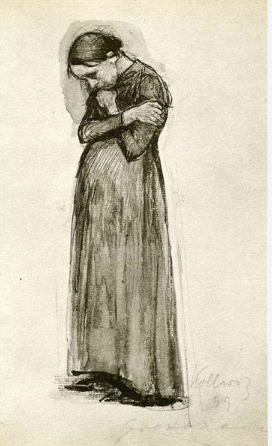
AFTERWORD:
Physicians and other dedicated scientists are still learning about the COVID situation, including the benefits and risks of COVID vaccination. Our own understandings are continually evolving, such that some of our current understandings (including some of the understandings explained in this article) may eventually need to be modified, even replaced, by new and better understandings. Such is the nature of scientific/medical inquiry. Accordingly, a new Open Letter—Part III may soon need to be written.
The process of attaining a best possible understanding of the COVID situation could be accelerated if scientists and physicians were to optimally engage in respectful, healthy, scientific dialogue. That is why Dr. Vanden Bossche, in March 2021, made an urgent call for such dialogue about vaccination issues. Unfortunately, that call went largely unheeded by the proponents of the prevailing COVID narrative. It is hoped that the original Open Letter to Parents and Pediatricians and this Update will facilitate much needed, overdue scientific dialogue about COVID vaccination—particularly, COVID vaccination of children.
Rob Rennebohm, MD
Email: rmrennebohm@gmail.com
Website: www.notesfromthesocialclinic.org
Geert Vanden Bossche. DVM, PhD
Website: www.voiceforscienceandsolidarity.org
May 12, 2022
REFERENCES:
- Huang Y, Yang C, Xu Xf. et al. Structural and functional properties of SARS-CoV-2 spike protein: potential antivirus drug development for COVID-19. Acta Pharmacol Sin 41, 1141–1149 (2020). https://doi.org/10.1038/s41401-020-0485-4
- Russell MW, Moldoveanu Z, Ogra PL and Mestecky J (2020) Mucosal Immunity in COVID-19: A Neglected but Critical Aspect of SARS-CoV-2 Infection. Front. Immunol. 11:611337. doi: 10.3389/fimmu.2020.611337
- Russell MW, Mestecky J, Strober W, Kelsall BL, Lambrecht BN, Cheroutre H. The mucosal immune system: Overview. In: J Mestecky, W Strober, MW Russell, BL Kelsall, H Cheroutre, BN Lambrecht, editors. Mucosal Immunology, 4. Amsterdam: Academic Press/Elsevier (2015). p. 3–8.
- Russell MW. Biological functions of IgA. In: CS Kaetzel, editor. Mucosal Immune Defense: Immunoglobulin A. New York: Springer (2007). p. 144–72.
- Baker K, Blumberg RS, Kaetzel CS. Immunoglobulin transport and immunoglobulin receptors. In: J Mestecky, W Strober, MW Russell, BL Kelsall, H Cheroutre, BN Lambrecht, editors. Mucosal Immunology, 4. Amsterdam: Academic Press/Elsevier (2015). p. 349–407.
- Kubagawa H, Bertoli LF, Barton JC, Koopman WJ, Mestecky J, Cooper MD. Analysis of paraprotein transport into saliva by using anti-idiotype antibodies. J Immunol (1987) 138:435–9.
- Vabret N, Britton GJ, Gruber C, Hegde S, Kim J, Kuksin M, et al. Immunology of COVID-19: current state of the science. Immunity (2020) 52:910–41. doi: 10.1016/j.immuni.2020.05.002
- Conley ME, Delacroix DL. Intravascular and mucosal immunoglobulin A: Two separate but related systems of immune defense? Ann Int Med (1987) 106:892–9. doi: 10.7326/0003-4819-106-6-892
- Russell MW, Kilian M, Mantis NJ, Corthé sy B. Biological activities of mucosal immunoglobulins. In: J Mestecky, W Strober, MW Russell, BL Kelsall, H Cheroutre, BN Lambrecht, editors. Mucosal Immunology, 4. Amsterdam: Academic Press/Elsevier (2015). p. 429–54.
- Bidgood SR, Tam JC, McEwan WA, Mallery DL, James LC. Translocalized IgA mediates neutralization and stimulates innate immunity inside infected cells. Proc Natl Acad Sci USA (2014) 111(37):13463–8. doi: 10.1073/ pnas.1410980111.
- Jackson S, Mestecky J, Moldoveanu Z, Spearman P. Appendix I: Collection and processing of human mucosal secretions. In: J Mestecky, J Bienenstock, ME Lamm, L Mayer, JR McGhee, W Strober, editors. Mucosal Immunology, 3. Amsterdam: Elsevier/Academic Press (2005). p. 1829–39
- Reyneveld GI, Savelkoul HFJ and Parmentier HK (2020) Current Understanding of Natural Antibodies and Exploring the Possibilities of Modulation Using Veterinary Models. A Review. Front. Immunol. 11:2139. doi: 10.3389/fimmu.2020.02139
- Coutinho A, Kazatchkine MD, Avrameas S. Natural autoantibodies. Curr Opin Immunol. (1995) 7:812–8. doi: 10.1016/0952-7915(95)80053-0
- Holodick NE, Rodríguez-Zhurbenko N, Hernández AM. Defining natural antibodies. Front Immunol. (2017) 8:872. doi: 10.3389/fimmu.2017.00872
- Panda S, Ding JL. Natural antibodies bridge innate and adaptive immunity. J Immunol. (2015) 194:13–20. doi: 10.4049/jimmunol.1400844
- Ochsenbein AF, Zinkernagel RM. Natural antibodies and complement link innate and acquired immunity. Immunol Today. (2000) 21:624–30. doi: 10.1016/s0167-5699(00)01754-0
- Binder C. Naturally occurring IgM antibodies to oxidation-specific epitopes. Adv Exp Med Biol. (2012) 750:2–13. doi: 10.1007/978-1-4614-3461-0_1
- Loske, J., Röhmel, J., Lukassen, S. et al. Pre-activated antiviral innate immunity in the upper airways controls early SARS-CoV-2 infection in children. Nat Biotechnol (2021). https://doi.org/10.1038/s41587-021-01037-9
- Van Egeren D, Novokhodko A, Stoddard M, et al. Risk of rapid evolutionary escape from biomedical interventions targeting SARS-CoV-2 spike protein. PLoS One. 2021;16(4):e0250780. Published 2021 Apr 28. doi:10.1371/journal.pone.0250780
- Graves CJ, Ros VID, Stevenson B, Sniegowski PD, Brisson D. Natural selection promotes antigenic evolvability. PLoS Pathog. 2013; 9: e1003766. https://doi.org/10.1371/journal.ppat.1003766 PMID: 24244173
- Thomson EC, Rosen LE, Shepherd JG, Spreafico R, Filipe A da S, Wojcechowskyj JA, et al. Circulating SARS-CoV-2 spike N439K variants maintain fitness while evading antibody-mediated immunity. Cell. 2021; 184: 1171–1187.e20. https://doi.org/10.1016/j.cell.2021.01.037 PMID: 33621484
- Korber B, Fischer WM, Gnanakaran S, Yoon H, Theiler J, Abfalterer W, et al. Tracking Changes in SARS-CoV-2 Spike: Evidence that D614G Increases Infectivity of the COVID-19 Virus. Cell. 2020; 182: 812–827.e19. https://doi.org/10.1016/j.cell.2020.06.043 PMID: 32697968
- Plante JA, Liu Y, Liu J, Xia H, Johnson BA, Lokugamage KG, et al. Spike mutation D614G alters SARSCoV-2 fitness. Nature. 2020; 1–9. https://doi.org/10.1038/s41586-020-2895-3 PMID: 33106671
- Weisblum Y, et al. Escape from neutralizing antibodies by SARS-CoV-2 spike protein variants. Elife. 2020 Oct 28;9:e61312. doi: 10.7554/eLife.61312.PMID: 33112236
- Sui J, et al. Effects of human anti-spike protein receptor binding domain antibodies on severe acute respiratory syndrome coronavirus neutralization escape and fitness. J Virol. 2014 Dec;88(23):13769-80. doi: 10.1128/JVI.02232-14. Epub 2014 Sep 17.PMID: 25231316
- Hodcroft EB, Zuber M, Nadeau S, Comas I, Candelas FG, Consortium S-S, et al. Emergence and spread of a SARS-CoV-2 variant through Europe in the summer of 2020. medRxiv. 2020; 2020.10.25.20219063. https://doi.org/10.1101/2020.10.25.20219063 PMID: 33269368
- Kemp SA, Harvey WT, Datir RP, Collier DA, Ferreira I, Carabelli AM, et al. Recurrent emergence and transmission of a SARS-CoV-2 Spike deletion ΔH69/V70. bioRxiv. 2020; 2020.12.14.422555. https:// doi.org/10.1101/2020.12.14.422555
- Davies NG, Abbott S, Barnard RC, Jarvis CI, Kucharski AJ, Munday JD, et al. Estimated transmissibility and impact of SARS-CoV-2 lineage B.1.1.7 in England. Science. 2021 [cited 6 Apr 2021]. https://doi. org/10.1126/science.abg3055 PMID: 33658326
- Lee WS, Wheatley AK, Kent SJ, DeKosky BJ. Antibody-dependent enhancement and SARS-CoV-2 vaccines and therapies. Nature Microbiology. 2020; 5: 1185–1191. https://doi.org/10.1038/s41564-020- 00789-5 PMID: 32908214 4
- Stoddard M, Sarkar S, Nolan RP, White DE, White L, Hochberg NS, et al. Beyond the new normal: assessing the feasibility of vaccine-based elimination of SARS-CoV-2. medRxiv. 2021; 2021.01.27.20240309. https://doi.org/10.1101/2021.01.27.20240309
- Lempp, F.A., et al. Lectins enhance SARS-CoV-2 infection and influence neutralizing antibodies. Nature 598, 342–347 (2021). https://doi.org/10.1038/s41586-021-03925-1
- Liu et al. An infectivity-enhancing site on the SARS-CoV-2 spike protein targeted by antibodies. Cell 184, 3452–3466; 2021. (https://www.sciencedirect.com/science/article/pii/S0092867421006620)
- Peacock TP, et al. The SARS-CoV-2 variant, Omicron, shows rapid replication in human primary nasal epithelial cultures and efficiently uses the endosomal route of entry. January 3, 2022. (https://www.biorxiv.org/content/10.1101/2021.12.31.474653v1)
- Yahi N, Chahinian H, Fantini J. Infection-enhancing anti-SARS-CoV-2 antibodies recognize both the original Wuhan/D614G strain and Delta variants. A potential risk for mass vaccination? J Infect. 2021 Nov;83(5):607-635. doi: 10.1016/j.jinf.2021.08.010. Epub 2021 Aug 9. PMID: 34384810; PMCID: PMC8351274. (https://pubmed.ncbi.nlm.nih.gov/34384810/)
- Gadanec LK, McSweeney KR, Qaradakhi T, Ali B, Zulli A, Apostolopoulos V. Can SARS-CoV-2 Virus Use Multiple Receptors to Enter Host Cells?. Int J Mol Sci. 2021;22(3):992. Published 2021 Jan 20. doi:10.3390/ijms22030992 (https://www.ncbi.nlm.nih.gov/pmc/articles/PMC7863934/#B233-ijms-22-00992)
- Perez-Zsolt D, et al. SARS-CoV-2 interaction with Siglec-1 mediates trans-infection by dendritic cells. Cellular & Molecular Immunology 18:2676–2678; 2021. (https://www.nature.com/articles/s41423-021-00794- 6.pdf
- Meng, B., Abdullahi, A., Ferreira, I.A.T.M. et al. Altered TMPRSS2 usage by SARS-CoV-2 Omicron impacts infectivity and fusogenicity. Nature 603, 706–714 (2022). https://doi.org/10.1038/s41586-022-04474-x https://www.biorxiv.org/content/10.1101/2021.12.17.473248v2).
0 Comments